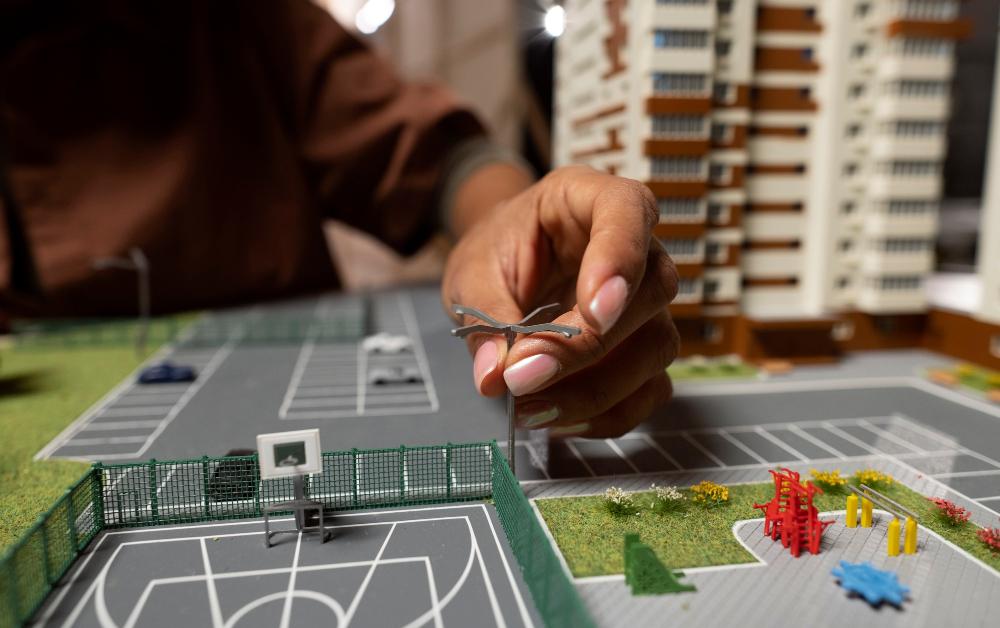
In the fast-paced world of urbanisation, cities are continuously evolving entities that shape and are shaped by the people who inhabit them. The concept of designing cities with a human-centred approach has gained significant momentum in recent years. This approach aims to prioritise the well-being and needs of the residents, fostering an environment that enhances their quality of life.
In this article, we’ll delve into the principles and benefits of human-centred urban development, explore real-world examples like “Madinet Masr,” and discuss the potential for creating vibrant, sustainable, and thriving cities.
Introduction
Cities are not merely clusters of buildings; they are living ecosystems that reflect the values, needs, and aspirations of their inhabitants. As the world’s population gravitates towards urban areas, the importance of crafting cities for the people becomes paramount. The traditional model of urban development often prioritised economic growth and infrastructure, sometimes overlooking the well-being of residents. Human-centred urban development, on the other hand, seeks to create spaces that promote community, well-being, and sustainability.
Understanding Human-Centred Urban Development:
At its core, human-centred urban development places people at the heart of decision-making. This approach involves understanding the habits, preferences, and needs of residents to design spaces that enhance their daily lives. It goes beyond aesthetics and infrastructure, focusing on fostering a sense of belonging and connectedness.
The Pillars of Human-Centred Design:
Several key principles guide human-centred urban development:
- Community Engagement: Residents’ input is invaluable in shaping their surroundings. Engaging the community in the planning process ensures that projects align with their desires and needs.
- Mixed-Use Spaces: Designing cities with a mix of residential, commercial, and recreational areas fosters walkability, reduces congestion, and encourages social interaction.
- Green Spaces: Access to parks and green areas improves air quality, provides recreational opportunities, and enhances mental well-being.
- Mobility and Accessibility: Efficient public transportation, pedestrian-friendly streets, and bike lanes contribute to reduced traffic congestion and increased mobility.
- Cultural Preservation: Valuing a city’s history and culture contributes to its unique identity and enhances residents’ pride in their environment.
- Sustainability: Implementing eco-friendly practices, such as renewable energy sources and efficient waste management, ensures a healthier environment for current and future generations.
Realising the Vision: “Madinet Masr” and Beyond:
One compelling example of human-centred urban development is “Madinet Masr,” an initiative in Egypt. The project focuses on revitalising urban areas by creating spaces that prioritise people over vehicles. This includes pedestrianising streets, enhancing public transportation, and creating public plazas. By doing so, “Madinet Masr” promotes community interaction, reduces pollution, and improves overall urban quality.
Sustainable Development and Resilience:
Human-centred urban development goes hand in hand with sustainability. By creating energy-efficient buildings, incorporating renewable energy sources, and implementing climate-resilient infrastructure, cities become better equipped to tackle the challenges of the future. Sustainable practices not only benefit the environment but also contribute to economic savings and improved public health.
Inclusivity and Accessibility: Empowering All Residents:
An often underestimated aspect of urban development is inclusivity. Designing cities that cater to people of all ages, abilities, and socioeconomic backgrounds is essential. This includes creating accessible infrastructure, affordable housing, and spaces that encourage social cohesion. When everyone can actively participate in city life, a stronger sense of community and belonging emerges.
Conclusion:
In a world where urbanisation is rapidly transforming landscapes, the concept of human-centred urban development offers a promising path forward. By prioritising the needs, well-being, and aspirations of residents, cities can become more than concrete jungles; they can become vibrant, interconnected communities. Initiatives like “Madinet Masr” demonstrate the tangible benefits of such an approach, from fostering community interaction to enhancing sustainability.
As we continue to shape our cities, let us remember that they are not just structures; they are homes for people, and their design should reflect the diverse tapestry of human life.
Interesting Related Article: “Innovations Shaping the UK Property Landscape“
